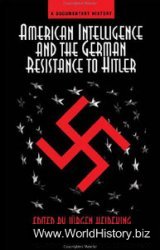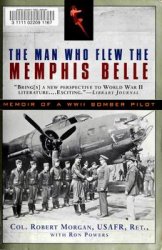1942-1943
Day that they bombed Pearl Harbor, the Japanese attacked Guam and the Philippines. They moved quickly to grab U. S. island bases in the Pacific. Japan's military leaders knew that the United States would soon make good its losses at Pearl and mount a counterattack. They had to press their advantage while the United States was still weak.
Brutal Conquests. After the surrender in May of
Bataan and Corregidor in the Philippines, the Japanese forced American and Philippine captives on a long march to prison camps. With no food and only tablespoonfuls of water to drink, many died en route. Japanese treatment of U. S. prisoners infuriated Americans. U. S. war posters depicted the Japanese as inhuman monsters.
In the early months of 1942, Japanese forces moved south as well, trouncing Malaya and then Singapore. They forced Singapore’s surrender by seizing its water supply and threatening to bomb the population.
Japan invaded Burma, defeating the British forces stationed there. Then it was on to Indonesia, the Dutch East Indies, New Guinea, and Java. The Dutch, who controlled Java, offered some stiff resistance. But Japans naval forces destroyed most of the tiny fleet opposing them. The Japanese seemed unstoppable.
Doolittle RAIO. Though the united States was not yet ready to battle Japan in earnest, the U. S. military command was determined to do something. From American carriers, a squadron of B-25s set off to bomb Tokyo and other Japanese cities on April 18. Lieutenant Colonel James Doolittle led the raid. This daring attack startled the Japanese. Their home islands were no longer safe.
The United States also had some other surprises in store. In the attack on Pearl Harbor, Japan had missed two aircraft carriers that were temporarily at sea. The omission was a serious one. The two carriers, the Lexington and the Enterprise, would soon stop the Japanese momentum.
Battle of the Coral Sea. in May, Japan and the
United States fought their first aircraft carrier battle in the Coral Sea. The Japanese were intent on using parts of two fleets to cut off Australia h'om the rest of the world.
U. S. intelligence, though, was way ahead of them. Using decoded enemy messages, the Pacific Fleet’s commander in chief. Admiral Chester Nimitz, already knew about the Japanese plan. And he had one of his own. He assembled two carrier task forces around the Lexington and Yorktown, backed up by a task force of Australian and U. S. cmisers.

THEY DID THEIR PART
The USS Juneaums part of a navy convoy supporting the fight for Guadalcanai. During a sea battle with the Japanese, it was severely damaged along with several other ships.
The vessels were on their way back to port when the Juneaums torpedoed. An explosion ripped through the ship, killing most of the 700-man crew. More than a hundred men, though, were thrown free.
They ended up in the thick, oil-covered water. Many were badly injured. Three rafts had been tossed off the ship; some of the men boarded these. The seriously injured were hung in nets from the side.
Other ships had seen the explosion, so the men thought for sure they would be rescued. In fact, though, no one reported the incident. The other ships were under instructions to maintain radio silence. The men continued to suffer in the hot sun. Eventually a search plane spotted them, but its offi
Cer simply filed the sighting in his daily report.
The survivors of the Juneau had no drinking water or food. They had been in the water for three days. Sharks surrounded them, feeding on the men who died each day. Eventually many of the survivors went mad.
One of them was George Sullivan, one of five Sullivan brothers stationed on the ship. After the explosion he searched in vain for his four brothers, calling their names out over and over again. After days of waiting, George Sullivan thought he could swim to shore. He jumped out of the raft and was immediately attacked by sharks.
It took six days before the men from the Juneau were rescued. By then only ten were left alive.
The deaths of the five Sullivan brothers were used immediately to promote the war effort, but the true story of the Juneau survivors was not made public until 1994.

An F6F crash-lands on the Enterprise. A weakened U. S. fleet fought to hold back the Japanese tide in the Pacific.
The battle was a draw. The Lexington was sunk and the Yorktown damaged. The Japanese lost the carrier Shoho, but the Japanese invasion fleet turned back. Remarkably the fleets never sighted each other during the entire battle.
Battle at Midway. The fight in the Coral Sea kept
Japan from landing at Port Moresby and thereby cutting off Australia. The tide was slowly turning against the Japanese. This became veiy clear in the Asian nation's next bout with the U. S. Pacific Fleet at Midway Island.
Harvard-educated Admiral Isoroku Yamamoto had overseen the raid on Pearl Harbor. Now he planned an attack on Midway Island, an important U. S. naval outpost. He assembled the most powerful Japanese fleet ever mustered: aircraft carriers, destroyers, battleships, submarines. With it he hoped to cover Japanese troops invading Midway. More importantly, he wanted to destroy the remaining U. S. Pacific Fleet, to finish the job he had started at Pearl Harbor.
Intelligence from MAGIC, however, came to the rescue, revealing Yamamoto's plan. The information allowed Nimitz to lay a trap for the Japanese. He ordered U. S. earners to ambush the enemy fleet as it moved on Midway. Japanese carrier planes bombed Midway early on June 4, 1942, unaware that American carriers lurked nearby. Scout planes from the Yorktown, Enterprise, and Hornet then spotted Yamamoto's fleet.
At first, his defending Zero fighters blunted every attack from the U. S. carriers—the Zeros shot down 37 of 41 torpedo planes. But the sacrifice of these low-flying toi-pedo pilots left the Japanese unprotected above. Screaming down at the crucial moment, American dive-bombers sent bomb after bomb into Japanese carrier decks packed with fuel and bomb-laden warplanes. Wreathed in flames, three Japanese can iers went down, followed by a fourth late in the day. Without air cover, Yamamoto had no choice but to retreat. Even though a Japanese sub sank the battle-damaged Yorktown, the Midway defeat cut the offensive heart out of Yamamoto’s fleet.
Battle for Guadalcanal. The Japanese held the tiny
"rain-sodden, malaria-ridden" island of Guadalcanal, close to Australia. The United States was determined to take it back. Guadalcanal would open the American campaign to force the Japanese back fi-om their gains in the Pacific. The fight for it would be fierce, the first of many dirt-clawing, island-scorching actions to come. Both sides bled heavily in the land and. sea battle. In the end, though, the rictory belonged to the Americans.
Success continued for the U. S. Pacific Fleet in 1943. In early March, the nay- attacked a Japanese convoy in the Bismarck Sea near Guadalcanal. Taking few losses, it sank eight transports—eveiy one in the fleet. Thousands of Japanese troops drowned in the salt water
€>




 World History
World History









